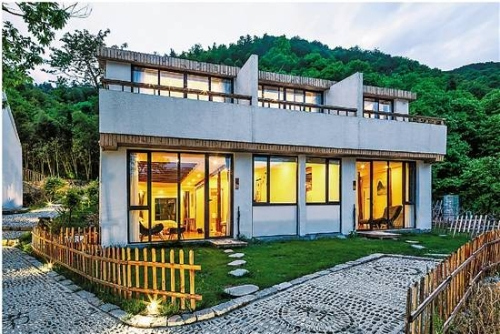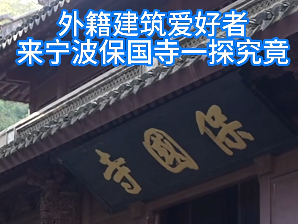In January 2018, Shaoxing released the "Farmhouse-on-the-shelf Activation Plan", taking the lead in the country to pave the new way for activating the use of idle farmhouses. Although it started early and the momentum was high, it could not resist the "growing pains" that activation coverage was small, sustainable development after activation was difficult, the capital to the countryside "finding a house" was difficult, and the activation of business was single also came to the fore.
To this end, in June, Shaoxing held a promotion meeting with the theme of deepening the "Farmhouse-on-the-shelf Activation" reform, released the "Farmhouse-on-the-shelf Activation Plan Version 2.0" and proposed a "Region-wide Activation Plan". This means that those farmhouses on the shelf will be activated from one single building towards a pan-village activation model and a whole-area activation model. After half a year's trial, has this new resolution of revitalizing farmhouses-on-the-shelf worked well? How to further integrate the surrounding resources and generate more values? Bearing these questions in mind, we initiated an in-depth interview towards the countryside of Shaoxing City.

The "Muge Mountain House" after transformation at Shangyu District
It is not difficult to renovate a farmhouse on the shelf, and it is harder to make the renovated farmhouses generate long-lasting benefits and continuously add vitality to rural revitalization.
Green brick tiles, large stoves, wood carved beds ...... Walking into the "Master Ye’s B&B" at the Yejia Village, we can see the quiet ancient house surrounded by green mountains and pure water, where the scenery is full of the memory of the past.
Two years ago in Shanghai, Ye Chongkai from Ye Family Village nosed the trend that a lot of farmhouses on the shelf had been renovated and then became popular among urban tourists. Thereafter he wanted to seize the opportunity to make some money. He returned to his hometown and renovated his family’s old houses, and transformed them into Bed-and-Breakfast (B&B).
However, after having taken credits from turning "sleeping assets" into extra income, Ye was a little bit lost this year, "visitors occasionally come to have meals at weekends, and they rarely want to accommodate here.", he said.
Thanks to the fame of the "Fuzhi Mountain", a lot of farmhouses on the shelf have been transformed into fresh and elegant B&Bs as well as unique places. That is, silent villages have started to show new vitality.
However, behind the vitality, there lie new hidden worries.
Luo Dangsheng, chairman of the People's Congress of Lingnan Township Shangyu District, indicated during the interview, that 70 percent of the renovated farmhouses had been transformed into B&Bs and agritainment places, and the duplication issue of too many players has led to a brutal scenario that some of them may face being eliminated from the market.
"Regardless of the impact of the COVID-19 epidemic, most of the renovated farmhouses remain similar and dull, most of which lack diversity and mutual interactions," Luo said frankly. "The entry-level of the B&B industry is low, and many people rush into the market just because of the policy stimulation, and also lack the capability of professional operations. In addition, the vast majority of the areas haven't been well equipped with sound support and scale effect, and the development prospects of those renovated farmhouses were not very clear." Luo added.
How to avoid the problem of putting the farmhouses-on-the-shelf a second time? Let's take a deeper closer look at Shaoxing City. In June, Shaoxing, which is also known as the first city in the country to take the lead in activating the use of farmhouses-on-the-shelf released the "Farmhouse-on-the-shelf Activation Plan Version 2.0", hoping to not only awaken but also keep those "sleeping houses" alive for a long time.
Therefore, Shaoxing initiated a pan-Shaoxing city activation plan in terms of assets on the shelf, such as land, mountains, forests, waters, culture, tourism, talent resources, and so forth. In the meantime, Shaoxing has also seized the opportunity of the new round of rural residential base system reform pilot, to further improve idle farmhouses' collection, transaction, development, and utilization, as well as rights protection and institutional innovation mechanism.
So far, Shaoxing has activated 17,158 farmhouses-on-the-shelf with an area of 3,522,100 square meters, drove 23,061 farmers to employment, and increased the income of village collectives and farmers to a total of 263 million yuan and 442 million yuan.
It is obvious that better referral services, the promotion of themed villages, and multi-village linkage development are also needed to ensure that those farmhouses can help to revitalize the countryside and to increase the income of villagers. Therefore, local authorities of Shaoxing proposed a region-wide participation program and summarized a set of systematic "activation plans" for villagers to share their experiences and methods with each other.
Social, as well as industrial and commercial capital investing in the countryside, opened up a virtuous cycle of urban and rural areas. Zhou Yongliang, Director of Shaoxing City Agricultural and Rural Bureau of Management and Reform said that in the meanwhile of the activation, we should also promote science and technology back into the countryside, capital into the countryside, young talents and villagers back to the countryside, so that new business ideas and models could stimulate the development potential of the countryside, pry resources on the shelf to activate the whole area, injecting the power for cultivating and growing new rural industries.
The farmhouse-on-the-shelf activation is not just a matter of a few farmhouses, it ultimately points to the comprehensive development and revitalization of the countryside and people. It is also the source of living water to enrich the material and spiritual life of the people.
(Edited by Ye Ke, Translated by Bian Bingying)




